Angelfish and Rainbow Sharks are popular favorites for home aquariums. But, do they coexist peacefully in the same tank?
What points must you ponder to successfully keep them side by side? Think tank size, water parameters, and feeding habits.
I recall my own early days with these fish, clueless as can be. It’s precisely why I’ve crafted this article – to pass on the wisdom gained from my hands-on experience.
Let’s get started.

Can I Keep Angelfish and Rainbow Sharks Together in the Same Tank?
No, it’s generally not advisable to keep Angelfish and Rainbow Sharks together in the same tank.
- Temperament Mismatch: Angelfish are generally peaceful and can become stressed by the more territorial Rainbow Shark, which may lead to health issues for Angelfish.
- Space Requirements: Rainbow Sharks need a lot of space and can grow up to 6 inches, often becoming aggressive in confined spaces, endangering Angelfish.
- Vertical Territory: Angelfish prefer tall tanks because they are vertically shaped; Rainbow Sharks are more horizontal swimmers and may disrupt Angelfish territory.
- Competitive Feeding: Rainbow Sharks are boisterous eaters and may outcompete Angelfish for food, which can result in the Angelfish not receiving adequate nutrition.
Also Read: Angelfish Tank Mates
Angelfish vs. Rainbow Sharks: Behavior
The first factor worth considering is the Angelfish’s and Rainbow Sharks’ natural behavior. Here is what you should know:
Angelfish: Natural Behavior
Angelfish are known for their calm demeanor and prefer a harmonious environment. They thrive in groups and are not typically aggressive unless breeding or cramped for space.
- Social Swimmers: Angelfish often swim in groups and establish a complex social hierarchy, which can be disrupted in the presence of more aggressive species.
- Territorial During Breeding: Breeding Angelfish become highly territorial, guarding their eggs and fry fiercely, which could be problematic with disruptive tank mates like Rainbow Sharks.
- Gentle Grazers: They usually feed slowly, nibbling on small prey or vegetation, and might be outcompeted for food by faster, more aggressive fish.
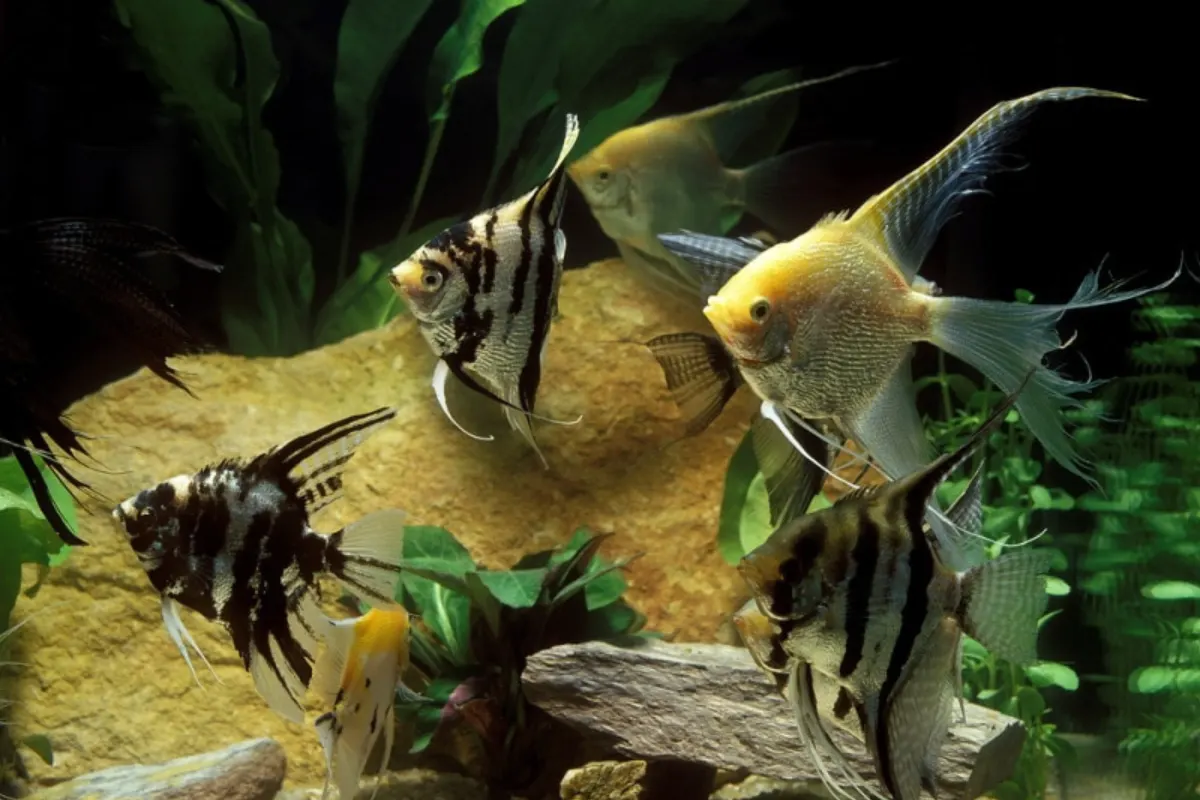
Rainbow Sharks: Natural Behavior
Rainbow Sharks, on the other hand, exhibit more assertive and territorial behavior, especially in smaller tanks.
They are active swimmers and often claim a particular area as their own.
- Dominant Dwellers: Rainbow Sharks are semi-aggressive, especially towards their own kind or fish with similar body shapes, potentially including Angelfish.
- Bottom Territory: These sharks often stake out the bottom of the tank as their territory, vigorously defending it against perceived intruders, which can stress Angelfish.
- Active Foragers: Rainbow Sharks are vigorous foragers and may display food aggression, monopolizing resources that Angelfish need, leading to competition and stress.
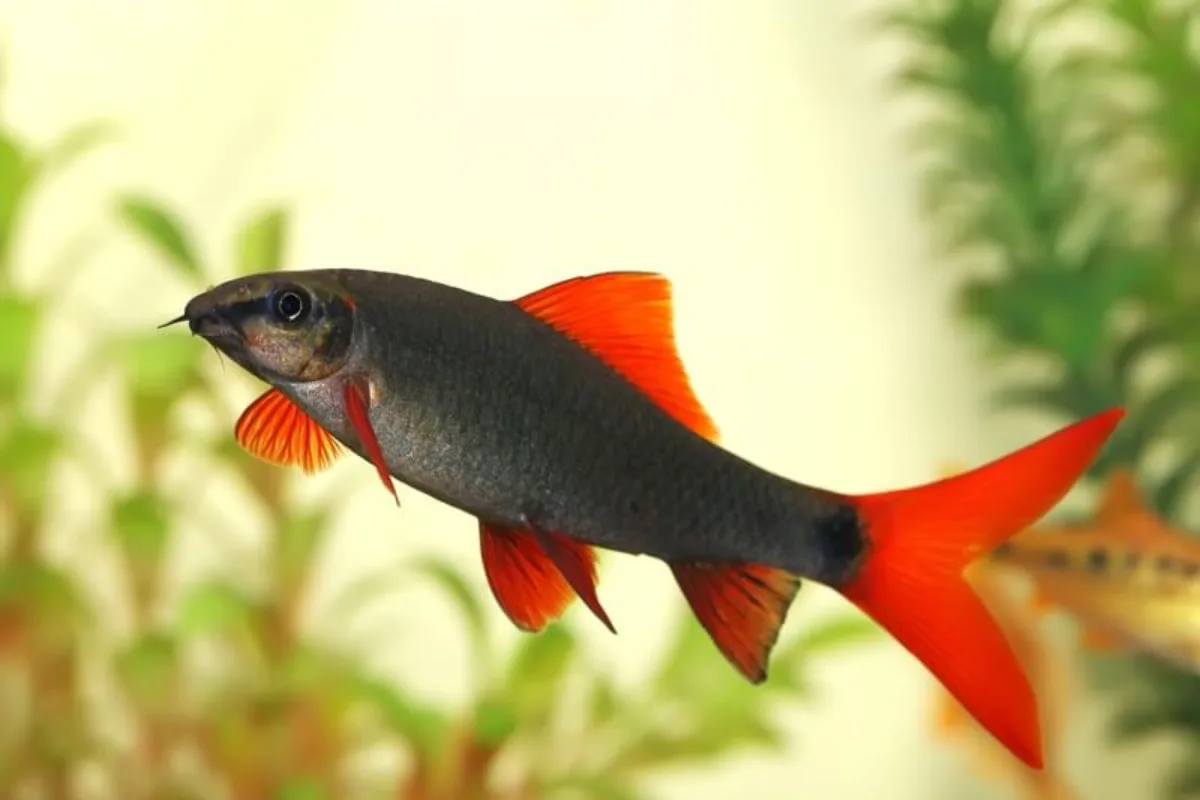
Ideal Parameters for Angelfish and Rainbow Sharks
This table presents the ideal water parameters for both Angelfish and Rainbow Sharks, with a separate column for a tank housing both species.
| Parameter | Angelfish | Rainbow Sharks | Both Types |
| Temperature | 76-82°F (24-28°C) | 72-82°F (22-28°C) | 76-82°F (24-28°C) |
| pH Level | 6.5-7.0 | 6.5-7.5 | 6.5-7.0 |
| Water Hardness | 3-8 dKH | 5-15 dKH | 5-8 dKH |
Angelfish: Ideal Parameters
Angelfish require specific water conditions to thrive, including a warm temperature, a slightly acidic to neutral pH, and moderate water hardness.
Stability in these parameters is crucial to maintain their health and reduce stress.
- Optimal Temperature: Angelfish prefer a tropical range of 76-82°F (24-28°C), which helps in maintaining their immune system and metabolism.
- Preferred pH Level: A pH level of 6.5 to 7.0 is ideal for Angelfish, mimicking their natural Amazonian habitat and promoting good health.
- Water Hardness: Soft to moderately hard water, around 3 to 8 dKH, is best for Angelfish, as it aligns with the mineral content of their natural rivers.
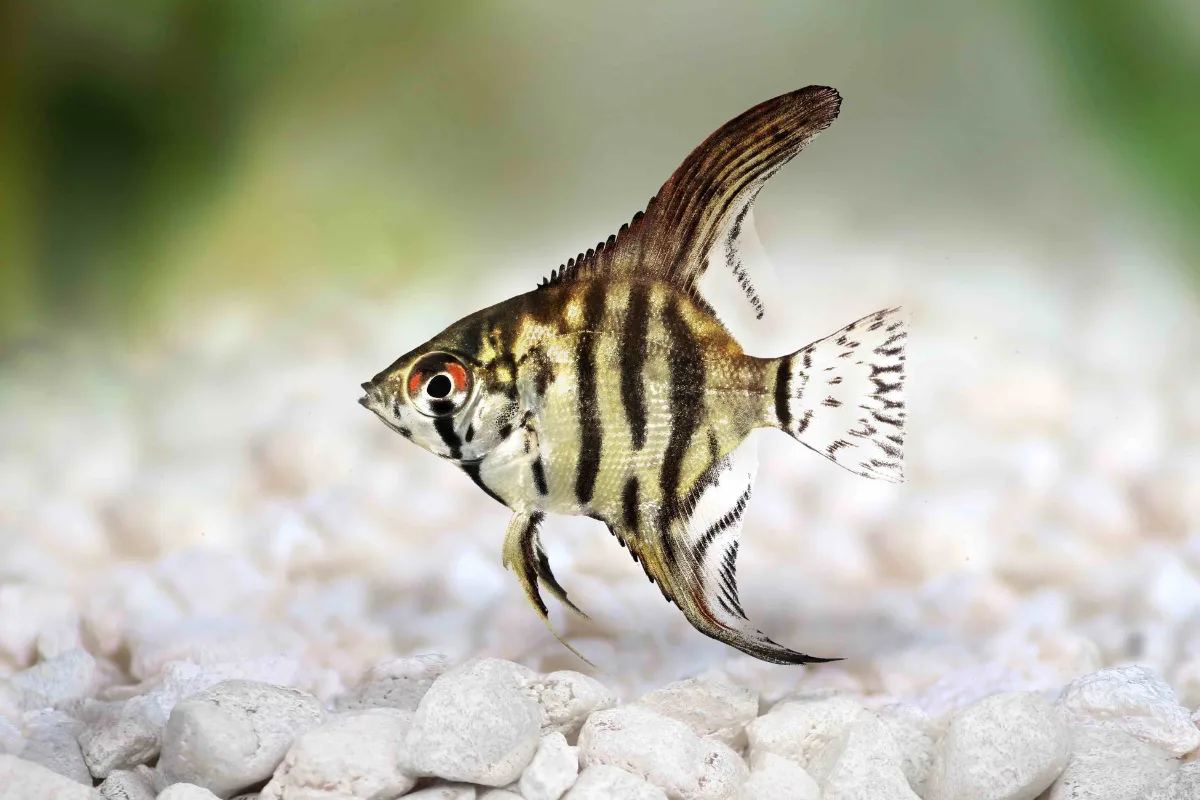
Rainbow Sharks: Ideal Parameters
Rainbow Sharks are resilient but still require specific water conditions that somewhat overlap with Angelfish, albeit they can tolerate a broader range.
They do well in a slightly more alkaline environment and need ample space to roam.
- Temperature Range: Rainbow Sharks are comfortable in temperatures between 72-82°F (22-28°C), allowing for some overlap with Angelfish preferences.
- Alkalinity Acceptance: A pH of 6.5 to 7.5 suits Rainbow Sharks, providing a common ground with Angelfish, though they can tolerate slightly more alkaline conditions.
- General Hardness: They can thrive in moderate to slightly hard water, typically between 5 to 15 dKH, offering a flexible range that can accommodate both species if necessary.
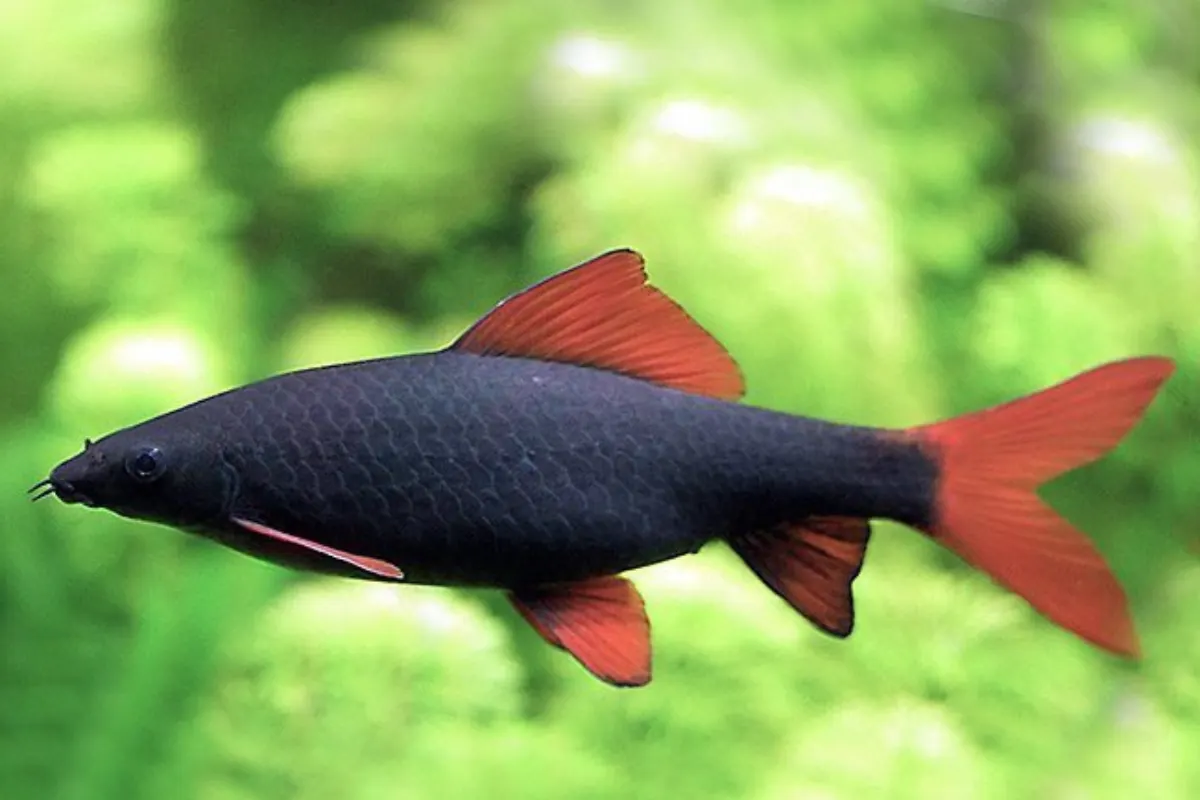
Angelfish vs. Rainbow Sharks: Tank Setup
The following table compares the tank setup requirements for Angelfish and Rainbow Sharks, providing insight for aquarists looking to house both.
| Tank Feature | Angelfish | Rainbow Sharks | Both Types |
| Tank Size | Min. 20 gallons for a pair | Min. 50 gallons for one | Min. 75 gallons |
| Foliage | Dense, tall plants | Robust or well-anchored plants | Combination of dense and robust plants |
| Decorations | Smooth-edged, ample space between | Cave-like structures, tunnels | Varied decorations with hiding spots |
| Filter | Gentle flow, biological filtration | Strong filtration, canister recommended | Robust filtration system |
| Heater | Consistent temperature 76-82°F | Sturdy heater 72-82°F | High-quality heater 76-82°F |
| Substrate | Fine, soft substrate | Medium coarseness | Mixed granularity suitable for both |
| Pump | Air pump for large tanks | Powerful water pump | High-capacity pump with adjustable flow |
| Lighting | Moderate lighting | Brighter lighting | Moderate to bright lighting |
| Ammonia/Nitrite | 0 ppm | 0 ppm | 0 ppm |
| Nitrate | <20 ppm | <20 ppm | <20 ppm |
Angelfish: Tank Setup
Angelfish tanks must mimic their natural Amazonian environment, emphasizing vertical space and plant cover, with pristine water conditions.
Filtration and heating are crucial for maintaining the clean, warm waters Angelfish need.
- Ammonia Nitrite Nitrate: Levels should be kept at 0 ppm for ammonia and nitrite, with nitrates less than 20 ppm to avoid stressing Angelfish.
- Tank Size: A minimum of 20 gallons is required for a pair, but larger groups will need at least 55 gallons to accommodate their territorial nature.
- Foliage: Dense, tall plants are essential, as Angelfish use them for shelter and breeding, mimicking their natural leafy environments.
- Decorations: Smooth-edged decorations are ideal to prevent injury, with enough space between them for Angelfish to navigate comfortably.
- Filter: A high-quality filter that provides gentle water flow and biological filtration is necessary to keep the water clean without creating strong currents.
- Heater: A reliable heater is needed to maintain a consistent temperature between 76-82°F, critical for Angelfish health.
- Substrate: Fine, soft substrate is preferred to reflect their riverbed habitats and for any potential bottom-dwelling breeding behavior.
- Pump: If a larger tank is used, an air pump to ensure even oxygen distribution may be beneficial, as long as it does not disturb the Angelfish with strong currents.
- Lighting: Moderate lighting that mimics a shaded Amazon basin will make Angelfish feel secure and promote natural coloration.
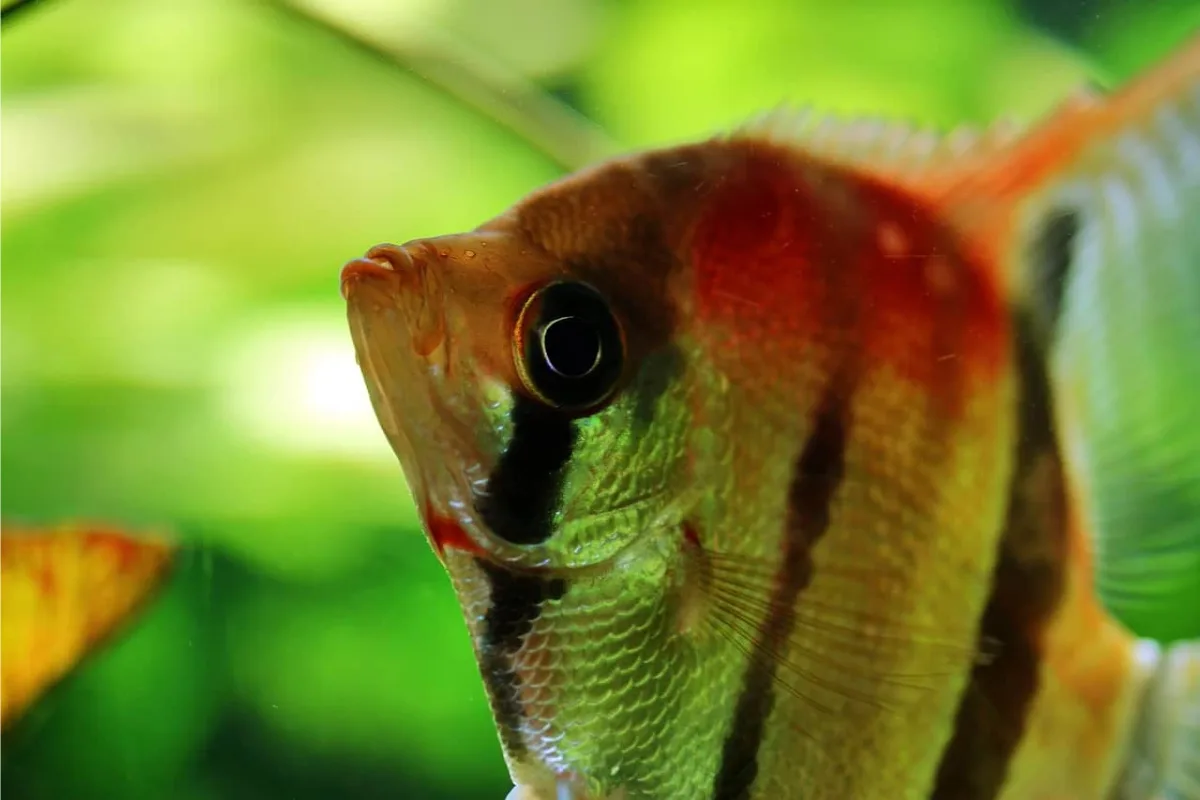
Rainbow Sharks: Tank Setup
The tank for Rainbow Sharks should offer plenty of swimming space and hiding spots to accommodate their active and territorial behavior, with robust filtration to handle their waste production.
- Ammonia Nitrite Nitrate: Keeping ammonia and nitrite at 0 ppm is essential, with nitrates as low as possible, ideally under 20 ppm for Rainbow Sharks’ health.
- Tank Size: A minimum of 50 gallons is necessary for one Rainbow Shark to provide ample space for swimming and territory establishment.
- Foliage: Live or artificial plants should be robust or well-anchored to withstand the Rainbow Sharks’ activity and occasional digging.
- Decorations: Cave-like structures or tunnels are recommended to provide hiding spots for Rainbow Sharks to retreat and claim as their territory.
- Filter: Strong filtration is critical, preferably with a canister filter that can handle the bioload and keep the water clear.
- Heater: Consistent temperatures in the range of 72-82°F must be maintained, with a sturdy heater suited for a larger tank.
- Substrate: A substrate of medium coarseness can cater to the Rainbow Sharks’ need for bottom dwelling and occasional sifting.
- Pump: A powerful water pump to maintain good water circulation and oxygenation is important for mimicking their natural river habitat.
- Lighting: Brighter lighting is acceptable for Rainbow Sharks, but it should be balanced to avoid promoting excessive algae growth in the tank.
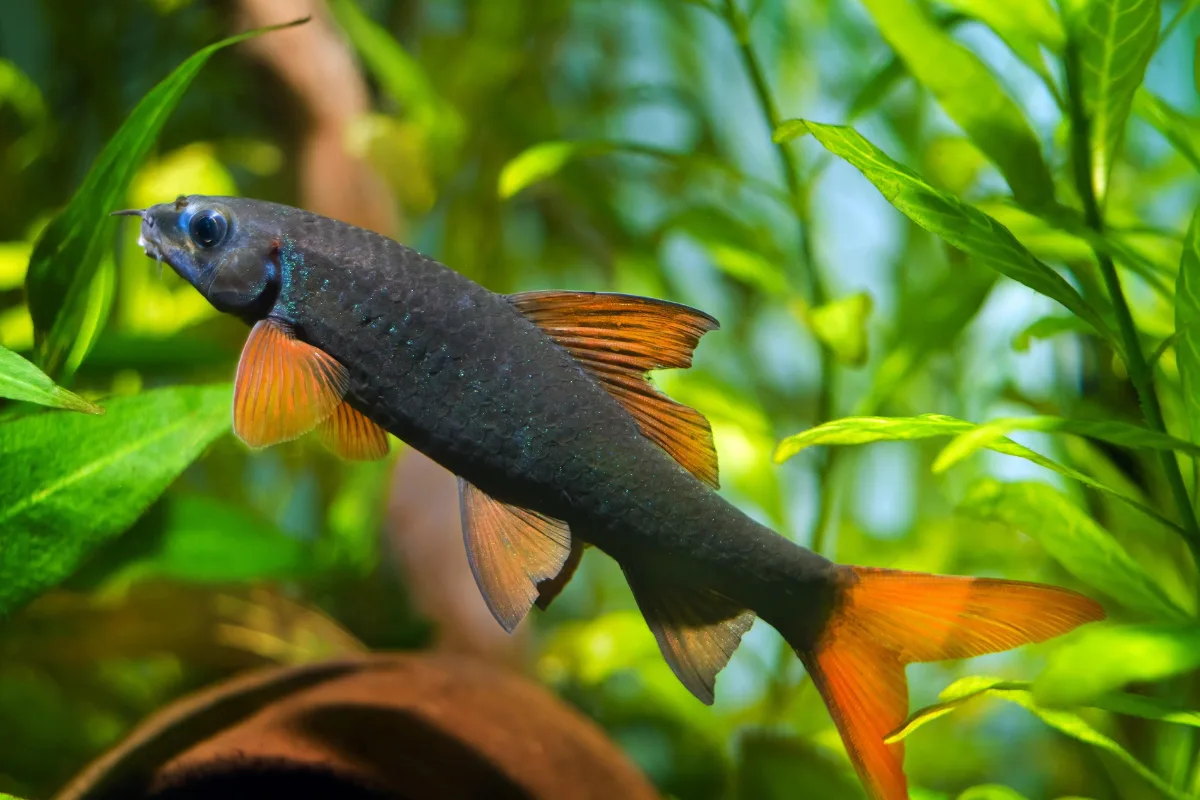
The Dietary Requirements of Angelfish and Rainbow Sharks
In the table below, the dietary needs for Angelfish and Rainbow Sharks are compared, with a column describing the requirements for a tank containing both.
| Dietary Aspect | Angelfish | Rainbow Sharks | Both Types |
| Food Types | Flake, brine shrimp, plants | Vegetables, pellets, live | Varied diet, inclusive of all needs |
| Quantity | 5% of body weight daily | Eaten in 5 mins once a day | Moderate amounts, considering both species |
| Feeding Schedule | 2-3 times a day | Once a day | 2-3 times a day, separate areas |
Angelfish: Ideal Dietary Requirements
Angelfish are omnivores with a preference for both plant-based foods and protein, requiring a varied diet to maintain their health and coloration.
Overfeeding should be avoided as it can lead to health issues and tank pollution.
- Food Types: Angelfish diets should include flake food, brine shrimp, bloodworms, and plant matter to provide necessary nutrients and vitamins.
- Quantity: Feed Angelfish small amounts that they can consume in 30 seconds to prevent overfeeding, typically about 5% of their body weight daily.
- Feeding Schedule: Angelfish benefit from being fed two to three times a day, with the amount adjusted based on activity and growth rates.
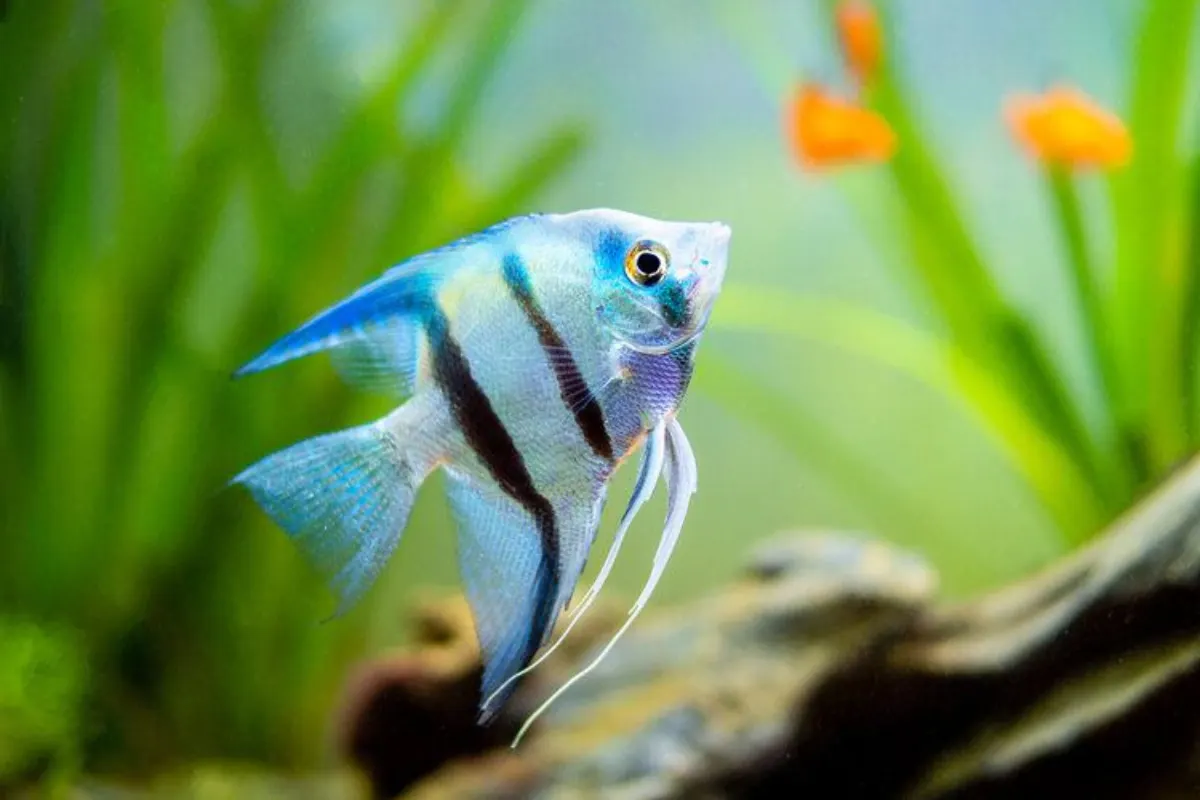
Rainbow Sharks: Ideal Dietary Requirements
Rainbow Sharks are omnivorous but lean towards more plant-based foods; they require a diet that supports their high energy and growth.
They are bottom feeders, so their food should sink to the substrate.
- Food Types: A diet for Rainbow Sharks should be rich in vegetables like zucchini, peas, and leafy greens, along with pellets and live food.
- Quantity: Offering food that can be eaten in about five minutes once a day is adequate, making sure not to overfeed to avoid waste buildup.
- Feeding Schedule: Consistent daily feeding is essential for Rainbow Sharks, ideally at the same time each day to help establish a routine.
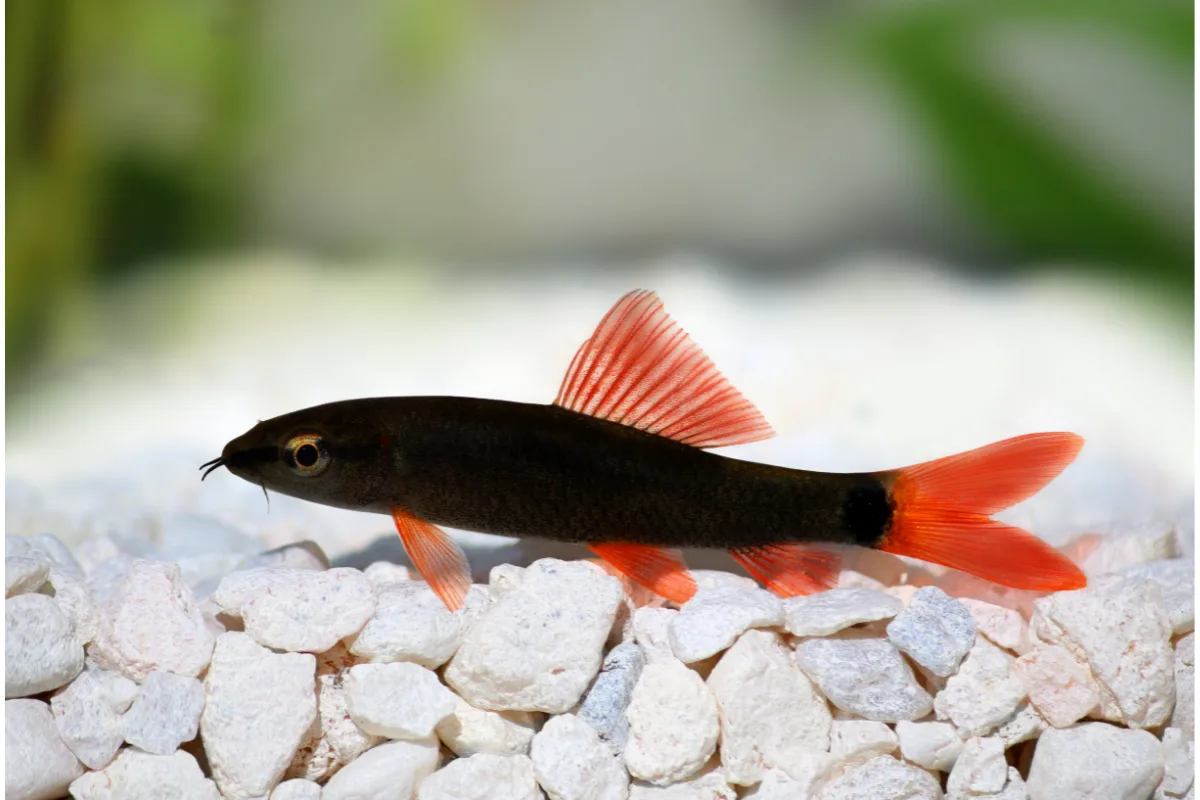
How to Introduce Your Angelfish to a Tank with Rainbow Sharks
While it’s not recommended due to potential compatibility issues, if you decide to introduce Angelfish to a tank with Rainbow Sharks, do so with extreme caution and close monitoring.
Gradual acclimatization and establishing clear territories beforehand can help minimize aggression.
- Quarantine First: Keep the Angelfish in a separate quarantine tank for at least 2 weeks to observe for any signs of illness or stress before introduction.
- Tank Size Check: Ensure the tank is large enough (minimum 55 gallons) to provide ample space for both Angelfish and Rainbow Sharks to establish territories.
- Introduce During Feeding: Introduce Angelfish during feeding time when Rainbow Sharks are distracted, reducing the chance of immediate territorial aggression.
- Visual Barrier: Use a clear divider or tank decorations to create a visual barrier, giving Angelfish time to settle without confrontation.
- Monitor Aggression: Watch for signs of aggression closely for several days; if the Rainbow Shark exhibits relentless chasing or nipping, the Angelfish should be removed.
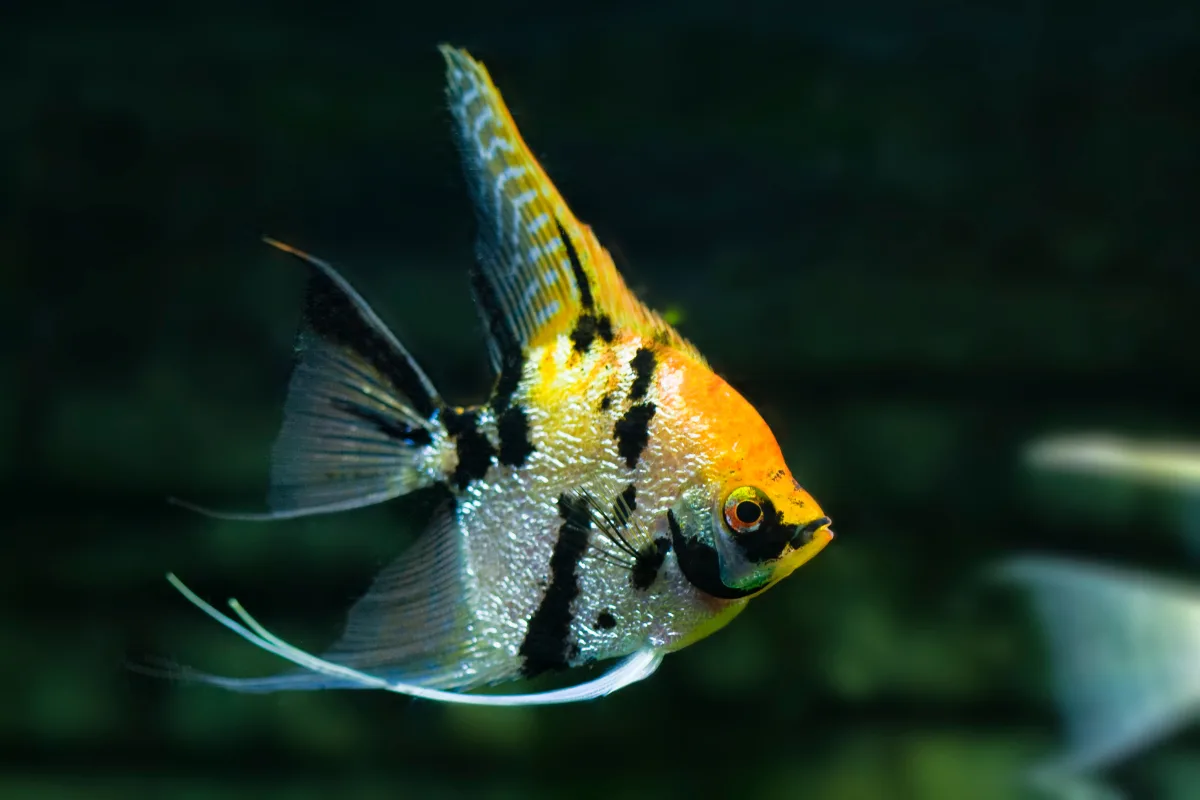
Tips for Keeping Angelfish with Rainbow Sharks
While keeping Angelfish with Rainbow Sharks is challenging due to the latter’s territorial nature, meticulous tank management and environmental enrichment can help reduce potential conflicts.
Careful observation and intervention are key to ensuring the cohabitation is as peaceful as possible.
- Large Tank: A spacious tank (75 gallons or larger) allows for ample swimming room, reducing competition for territory between Angelfish and Rainbow Sharks.
- Plenty of Hiding Spots: Provide numerous hiding places with plants and decorations to offer refuge and reduce direct line of sight, decreasing stress for Angelfish.
- Separate Feeding Areas: Establish distinct feeding zones at opposite ends of the tank to prevent food competition and aggression.
- Staggered Introduction: Introduce the Angelfish to the aquarium before the Rainbow Sharks to allow them to establish territory and reduce the likelihood of being bullied.
- Maintain Water Quality: Keep the water parameters in optimal ranges for both species, with regular monitoring and maintenance to avoid stress-induced aggression.
- Observe Behaviors: Monitor their interactions closely, especially in the initial weeks, to intervene if aggressive behavior from Rainbow Sharks is observed.
- Emergency Plan: Have a secondary tank ready in case Angelfish are relentlessly pursued or harassed, necessitating their removal for safety.
Also Read: Can Angelfish And Glofish Live Together?
Best Tank Mates for Angelfish and Rainbow Sharks
Selecting compatible tank mates for Angelfish and Rainbow Sharks requires choosing species that can handle the Sharks’ territorial nature and won’t outcompete the more peaceful Angelfish.
It’s crucial to pick tank mates that occupy different areas of the tank to minimize territory disputes and competition for resources.
- Corydoras Catfish: Peaceful bottom dwellers, Corydoras are excellent for cohabitation, as they won’t compete with Angelfish for vertical space or with Rainbow Sharks for territory.
- Dwarf Gourami: These fish are peaceful and stay relatively small, avoiding the territorial zones of Rainbow Sharks and not threatening Angelfish.
- Bristlenose Plecos: Ideal for their algae-eating habits, they stick to the tank’s bottom and sides, rarely interfering with Angelfish or provoking Rainbow Sharks.
- Zebra Danios: Fast and nimble, Danios occupy the top of the tank, which keeps them out of both the Angelfish’s and Rainbow Shark’s usual paths.
- Cherry Barbs: Small and peaceful, Cherry Barbs are mid-tank swimmers that tend to stay out of the way of both Angelfish and Rainbow Sharks.
- Bolivian Rams: Their calm demeanor and preference for the bottom of the tank make them less likely to intrude on the territories of Angelfish or Rainbow Sharks.
Also Read: Can Angelfish And Red Tail Sharks Live Together?
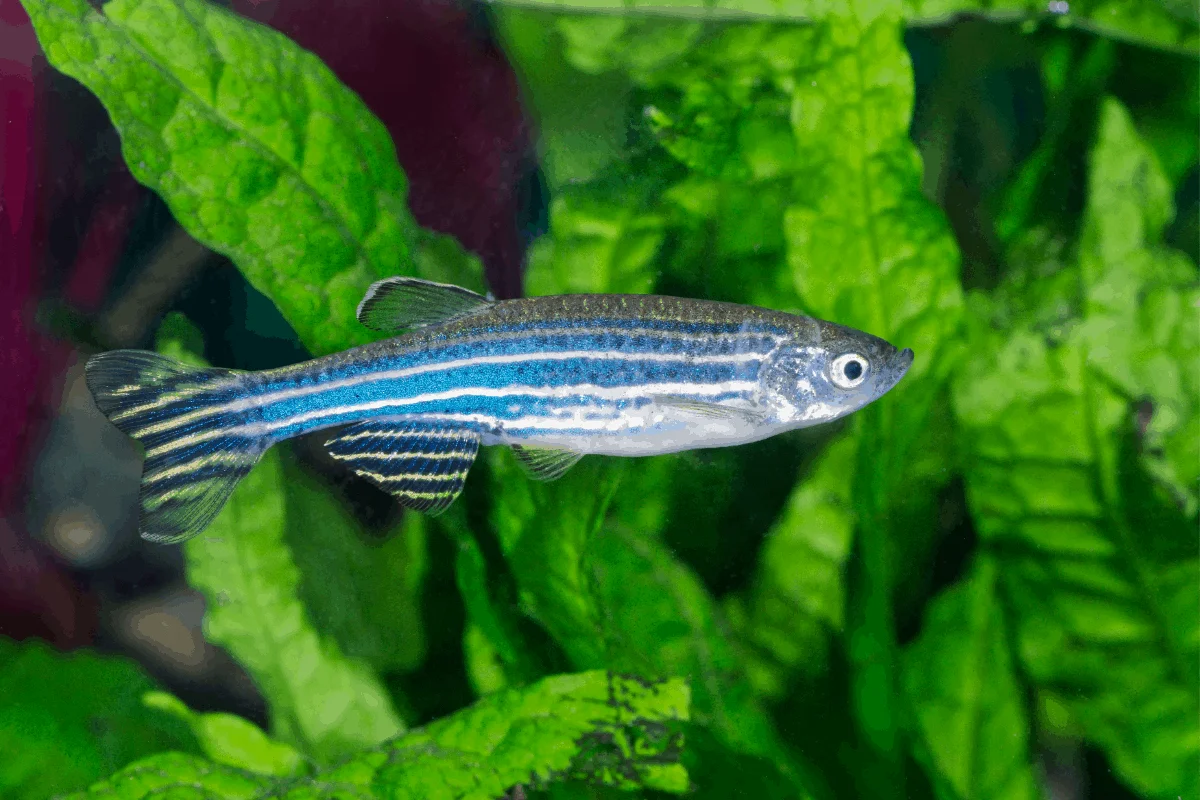
Conclusions
For quick readers, here’s a short summary:
- Angelfish and Rainbow Sharks generally do not make good tank mates due to differing temperaments and space requirements which can lead to stress and aggression.
- Ideal water parameters for both species do overlap, but Rainbow Sharks need more horizontal space and are more aggressive, making cohabitation risky.
- Tank setup for each species differs significantly, with Angelfish requiring vertical space and Rainbow Sharks needing more open swimming areas and hiding spots.
- The dietary needs of both fish are distinct, with Angelfish needing frequent, varied feedings and Rainbow Sharks requiring substantial plant matter.
- If attempting to house both fish together, a large tank, separate feeding areas, and careful monitoring are crucial to minimize aggressive interactions.
